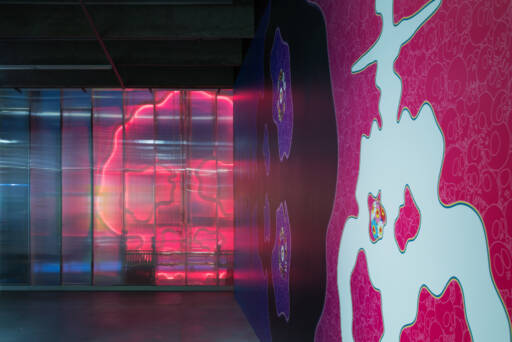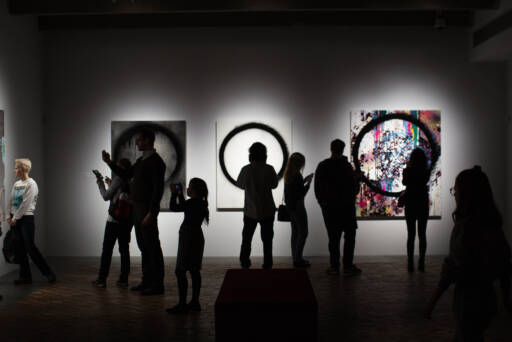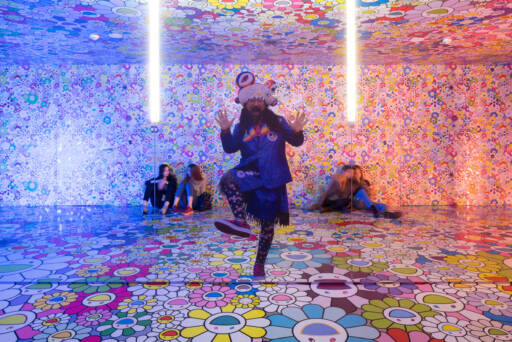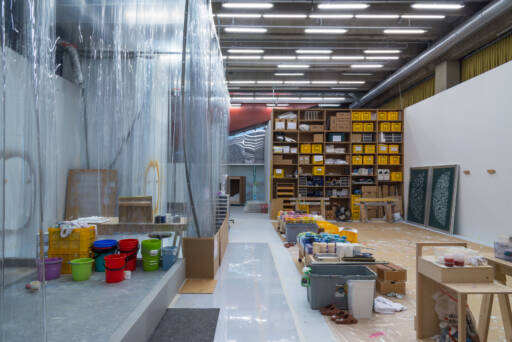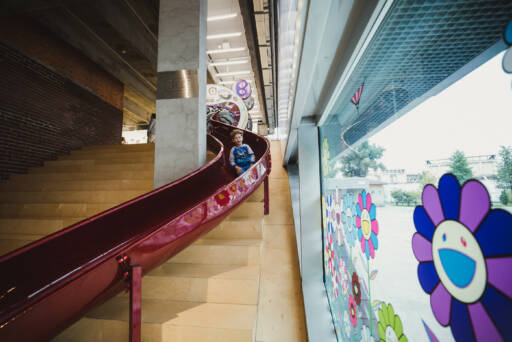Takashi Murakami. Under the Radiation Falls

-
Location
Moscow, Russia
-
Client
Garage Museum of Contemporary Art
-
Year
2017
-
Status
Completed
-
Program
Cultural
-
Artist
Takashi Murakami
-
Curator
Ekaterina Inozemtseva
-
Team
Ekaterina Golovatyuk
Giacomo Cantoni
Ksenia Bisti
Francesca Pagliaro
Ilgaz Kayaalp
-
Surface
3.500 sqm
-
Collaborators
Lighting Consultants: PJC Light Studio
Metal Carpentry: Metalltech
-
Press
wallpaper
vogue
“Consisting of five sections each exploring a particular phenomenon in Japanese culture which has been formally and semantically examined by Murakami, the show reveals the artist’s inquiries into the nuanced facets of Japanese culture and public consciousness, blurring the line between high and low culture…” (1)
For six months, all spaces of the Garage Museum of Contemporary Art surrendered to the ecstatic world of Takashi Murakami. While following the curatorial scheme and creating a distinct spatial strategy for each section within the 3500 sqm of the exhibition space of Garage, the installation, as a whole, mediated between the artists most known works and the architecture of the soviet public building.
Geijutsu (Learning and Technique) focused on the origin of Murakami’s conception of the pictorial space. The classical (didactic) hanging of the artist’s works next to the ones by old Japanese masters in the Skylight Room highlighted the “natural” continuity of tradition of subject and technique.
The second chapter, The Little Boy and the Fat Man, explored how the events of August 1945 affected the visual culture of the post war Japan. Through a dense mix of Murakami pieces, photography, manga and anime an organic connection between the work of Murakami and mass culture is made evident.
All works in this section are hung on a light white mesh panels, placed on a dense grid. The “field condition” generated by the rigid structure of the grid eliminates any sense of hierarchy between the heterogeneous exhibits, as well as, between the front and the back side of the paintings, providing the visitor with the opportunity to build multiple individual narratives and paths within this staged “archive”.
The third section Kawaii immerges the visitor in the aesthetics of cuteness and denial, an escape from the memories of war destruction.
Following the obliged route through the East Gallery, the four environments create matching backdrops for the works, leaving the rest in a direct dialogue with the building. The environments manipulate the recurring elements within Murakami oeuvre: bright fabrics, flower wallpaper, golden film, as well as, Japanese manga toys, assembled into an immersive installation, inspired by the geek paradise – the Nakano Broadway mall in Tokyo.
The fourth part of the exhibition, Sutajito, reproduces an equipped fragment of Murakami studio. Here, within a factory-like environment, the artist’s assistants worked during the installation period to execute and finish works, while after the exhibition opening, the public could witness the Fordian-like organization of the studio and the intricate logistics of the production process.
Asobi and Kazari, an ephemeral chapter, infiltrated all non-exhibition spaces of the museum, demonstrating Murakami’s interest in decoration and pattern. The contamination with ornament starts in the café passing through the bookshop and the lobby, and finally culminating on the facade of the building with two enormous neon skulls glowing through the polycarbonate.
(1) From the curatorial text by E. Inozemtseva






